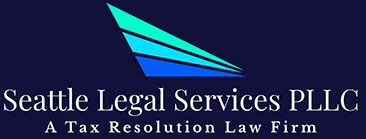What to Know About DOR Payment Plans

When you’re unable to cover your full tax bill, the IRS lets you set up a payment plan in most cases to get it paid off over time. The same goes for state taxes in Washington. The Washington Department of Revenue (WA DOR) provides a payment plan option for taxpayers who qualify, making it easier for you to stay in good standing and get that balance paid down.
But who is eligible? And what does the application process look like? This guide covers it all. Reach out to Seattle Legal Services if you’re not sure how to move forward with paying off your state back taxes.
Key Takeaways:
- The Washington Department of Revenue (WA DOR) offers payment plans that allow individuals and businesses to pay off state tax debts over 3, 6, 9, or 12 months if they owe between $100 and $100,000.
- Only certain taxes qualify for payment plans, including excise, forest, leasehold, use taxes, and capital gains accounts.
- Eligibility requirements are no recent payment plans, no active liens or warrants, and the ability to pay by direct debit.
- Penalties and interest continue to accrue during a payment plan, so factor these costs into your budget.
- Defaulting on a plan can trigger serious collection actions, such as tax liens, levies, and a demand for immediate payment in full.
- Working with a tax attorney can help you properly set up a plan, negotiate terms, and avoid costly mistakes with the WA DOR.
What Is a WA DOR Payment Plan?
If you have a state tax bill in Washington, you may be unable to pay the full amount all at once. The WA DOR provides an option to pay off your balance over time: plans are for 3, 6, 9, or 12 months via a self-service payment plan.
These plans are available to most Washington taxpayers who owe less than $100,000 but more than $100. Businesses and individuals can apply for these plans as long as they meet the other eligibility requirements, discussed later.
Not all types of taxes are eligible. Here’s an overview of the types of taxes you can pay for under a WA DOR payment plan:
- Excise taxes
- Forest tax
- Leasehold tax
- Use tax
- Capital gains accounts
If you’re not sure whether your taxes qualify, talk to an expert who can review your situation and provide guidance.
Who Is Eligible for a WA DOR Payment Plan?
The state is pretty clear about who can successfully apply for a payment plan. Make sure you qualify before applying by reviewing each of these eligibility requirements carefully:
- The state sent you a bill, Notice of Balance Due, about your balance.
- Your owed taxes are between $100 and $100,000.
- You can make direct debit payments from your bank account.
- You don’t have any active tax warrants or liens from the WA DOR.
- You haven’t had another active payment plan within the last year.
- If you received an estimated assessment, you filed your actuals with the state.
- You aren’t in active bankruptcy proceedings.
- Your business license has not been revoked.
- You don’t have any tax avoidance, tax evasion, or reseller permit misuse penalties.
With a WA DOR plan, you have a maximum of 12 months to pay off your balance, and you have to make your first payment within 30 days of signing up for the plan.
Payment plans allow you to get on top of your tax debt and avoid enforcement actions from the DOR, like wage garnishment and asset seizure. However, your balance will still accrue penalties and interest while you make payments on your plan.
Can you set up a payment plan on sales tax?
The WA DOR does not list sales tax under its list of taxes eligible for payment plans. Businesses don’t pay sales tax. Instead, they collect sales tax from customers and send it to the government – because of that fact, the DOR is very unlikely to let businesses make payments on these types of taxes.
How to Apply for a WA DOR Payment Plan
Applying for a WA DOR payment plan is done in a few simple steps using the My DOR online portal. Here’s how to apply online:
- You must be the account administrator.
- After logging in, go to My DOR Services and click Get Started.
- Click Add Self-Service Payment Plan under your account Summary 🡪 Balance.
- Review qualifications and click Next.
- Enter when you’ll make your first payment. This date must be within 30 days of the start of the plan.
- Enter your down payment amount, if applicable, and click Next.
- Select the plan term—3, 6, 9, or 12 months.
- Enter your bank account information for the direct debit withdrawals.
- Review your payment schedule and amounts to pay.
- If you need to make changes, go back.
- Enter your contact information.
- Review the terms and conditions and click OK. Click that you agree with the terms.
- Click Submit.
Other steps are required if you’re applying for an option other than a payment plan, like a Rule 100 settlement, which requires financial information to support your request. If you’re not sure how to complete the process, talk to a tax professional for help.
Alternatives to Payment Plans
Setting up a payment plan isn’t your only option when you can’t pay your Washington State tax bill. If you don’t qualify or can’t pay what you owe even with a plan, consider alternatives such as the following:
Voluntary Disclosure Program
Washington offers a voluntary disclosure program, which allows businesses that are still not registered to voluntarily register and pay their tax liability for the previous years when they should have been paying. The look-back period will be four years, plus the current year, and some penalties will be waived. You must contact the DOR before they contact you, or you will not be allowed to make a voluntary disclosure.
Tax Filing Extension
You can apply for a six-month filing extension for excise tax returns, but you need to request it before the original filing deadline. The WA DOR grants extensions for a range of reasons, including lost business records, medical emergencies, computer issues, or natural disasters.
Audit Defense or Reconsideration
Sometimes you may have a large tax bill as a result of an audit. You can dispute or appeal that decision if you disagree. You have 30 days from when you were notified about the audit findings to appeal to the DOR’s Administrative Review and Hearing Division.
Rule 100 Settlement
You may know that the IRS has a tax settlement option called an offer in compromise, which allows a taxpayer who can’t afford their full payment to settle for less. Washington State has a similar option, called a Rule 100 settlement. Under this program, you could be able to submit an offer of a lump sum to cover the debt, and the state may agree to settle for that proposed amount. These arrangements are fairly rare in Washington, but they do happen.
If you’re considering a Rule 100 settlement, work with a tax expert who can help you request this arrangement and provide the right offer to the state. They can help you determine if it’s the best option for the taxes you owe.
Tips for WA DOR Payment Plans
Applying for a plan with the WA DOR is the first step in getting yourself back in good standing with the state regarding taxes. Here are some additional tips to help you ensure your payment plan is followed through successfully:
Plan for the Right Time Frame
You have the option to do 3, 6, 9, or 12 months for your payment plan. Before you submit your application, think through which option is best for your financial situation. What can you reasonably afford to pay each month? Compare your expenses and income to ensure your payment will fit into your budget. Planning ahead helps you avoid defaulting on the plan.
Don’t Forget Penalties and Interest
Unfortunately, you will still be charged penalties and interest when you have a payment plan in place. The plan doesn’t allow you to avoid those charges — only paying off your balance in full does that. When creating your plan and thinking through your monthly payment, factor in penalties and interest as well as the principal balance.
Consider Making a Down Payment
The online system gives you an option to make a down payment when you apply for a payment plan. Doing this, if you can, reduces your debt and thus your penalties and interest. You will also have a monthly payment if you can put a little down upfront.
Apply for a Penalty Waiver
Sometimes, the WA DOR does waive penalties for taxpayers. These are the two circumstances when they may do this:
- You failed to comply with tax requirements because of circumstances beyond your control (does not include being unable to afford the tax or being unaware of a deadline).
- You have complied with tax return requirements for the last two years, including filing and paying all required returns on time.
You can request a penalty waiver in writing to the department when you make your late payment or filing. Check the applicable box for this option if filing electronically.
Stay Current on Payments
You never want to miss a payment when under a WA DOR payment plan. If you don’t meet all terms of the agreement, including making your payments, the plan will go into default, which you want to avoid. Set up alerts or reminders about your payments so you know when they’re due, and always be sure to have enough funds in your account for direct debit.
Pay All Other Taxes on Time
You can also default if you don’t pay future tax bills within five days of the deadline. Remember that you still have all the same tax obligations, even when you’re in a payment plan. Avoid additional issues by staying up to date on all future taxes.
What Happens If You Default on Your WA Payment Plan?
If you don’t pay on time or you fail to follow all other terms of your payment plan agreement, your account will go into default, and the plan will no longer be active. This means you’d have to pay the full balance immediately to avoid further collection actions from the state. These escalated collection actions could be tax liens, levies (asset seizure), or tax warrants.
Do everything you can to stay current on your plan until your balance is paid off and the term has ended. Avoid future problems and payment plans by filing and paying your future taxes on time each year, or each quarter if required.
Why Work with a Tax Attorney at Seattle Legal Services?
State taxes have different sets of requirements compared to the IRS, but you must comply carefully with both. In Washington, the DOR is diligent about ensuring taxpayers file and pay on time and will take more serious actions if you continue to ignore notices and fail to pay.
Working with a tax attorney has a few benefits when you owe tax debt to the state. They can help you communicate with the DOR and set up your payment plan properly. They will also negotiate the best terms possible for you and prevent missing any important guidelines or steps.
At Seattle Legal Services, our team of legal experts will help you navigate any kind of tax situation with the WA DOR. Contact us now to set up a consultation with an attorney.
Sources:
https://dor.wa.gov/manage-business/my-dor-help/self-service-payment-plans
https://dor.wa.gov/file-pay-taxes/file-or-amend-my-return/self-service-payment-plans-qualifications
https://dor.wa.gov/open-business/apply-business-license/voluntary-disclosure-program
https://dor.wa.gov/education/audits/audit-process-questions
https://dor.wa.gov/file-pay-taxes/late-filing/penalty-waivers
https://dor.wa.gov/file-pay-taxes/late-filing/excise-tax-return-extensions
https://workingfamiliescredit.wa.gov/get-help/my-dor-help-center/self-service-payment-plan
